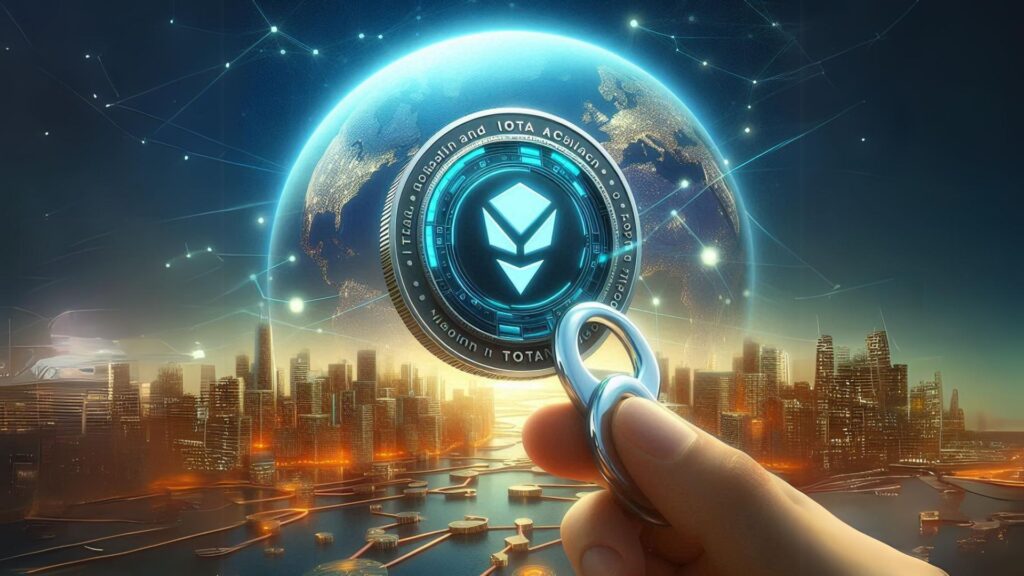The IOTA Foundation is on a revolutionary mission to digitise billions of real-world assets (RWA) through tokenisation. Dominik Schienerco-founder of IOTAhas recently highlighted this strategic shift and his vision for the future. In an interview with Collin Brown, Schiener shares his inspiration for founding IOTA, the challenges overcome, the milestones achieved and the next steps for the Foundation.
The Inspiration Behind IOTA
Fundamentals of IOTA Creation
Dominik Schiener explained that the inspiration for founding IOTA came from early cryptocurrencies, especially Bitcoin. These early technologies had the mission to cut out intermediaries and give control back to the users. However, it soon became clear that Bitcoin's proof-of-work (PoW) was not scalable indefinitely, which led to the search for better technical solutions.
The Evolution of IOTA
With this realisation, Schiener and his team decided to create IOTA from scratch, opting for a completely new technology: the directed acyclic graph (DAG). This data structure allows for more efficient parallelisation compared to traditional single-threaded blockchains, addressing scalability and efficiency issues.
The Key Differences of IOTA
Pioneering use of DAG
IOTA distinguishes itself from other cryptocurrencies and blockchain projects by its pioneering use of DAG as the underlying data structure. This technical choice enables seamless collaboration with diverse entities globally and offers superior scalability.
Non-Profit Foundation
Another significant difference is that the IOTA Foundation is a non-profit entity registered in Germany. This status provides regulatory advantages and facilitates collaboration with companies, governments and international bodies, including the European Commission. German government oversight instils a level of trust that greatly benefits the project.
Challenges in IOTA Development
Starting from Zero
Schiener recalled that IOTA started without any significant financial backing, apart from the initial $500,000 from the crowdsale in 2015. This meant they had to develop the entire operation, token and technology from scratch. Instead of improving on an existing architecture, IOTA innovated by using the DAG, facing concurrency issues that needed to be overcome.
Adapting to an Evolving Market
Initially focused on the Internet of Things (IoT), IOTA has evolved to encompass the tokenisation of real-world assets. Schiener stressed that while the term "IoT" may not be used as much today, automation and digitisation are still key. The IOTA Foundation has broadened its focus to include tokenisation, which Schiener sees as the "silver bullet" of cryptocurrencies.
Promising Use Cases
Applications Beyond IoT
While IoT remains relevant, IOTA has branched out to include use cases in trade finance, logistical monitoringdigital product passports and regional vouchers. These use cases demonstrate how blockchain technology can be applied in the real world, beyond typical cryptocurrency applications.
Tokenisation of Real World Assets
IOTA's current focus on RWA tokenisation has the potential to unlock the value of dormant analogue assets. IOTA's vision is to bridge the gap between the real world and the Web3, using their normative work and the use cases they promote in their network. Tokenisation allows assets to be used in an immutable and self-determined way, without the need for intermediaries.
Milestones and Next Steps
Authority in DAGs
Schiener said that the IOTA Foundation is the undisputed global authority on DAGs, having gone through years of research and development. The next phase will focus on the application of the technology, taking successful use cases to the next level.
Launch of Mainnet EVM
On 4 June 2024, the IOTA Foundation launched its EVM (Ethereum Virtual Machine) Mainnet, enhancing blockchain capabilities for real-world asset integration. This launch introduces features such as smart contracts, cross-chain functionality and strong infrastructure support.
Focus on RWA Tokenisation
The next big step for IOTA is the tokenisation of RWA. Schiener mentioned that the long-term vision is to bring billions of on-chain assets to IOTA, transforming the value of analogue assets into digital and accessible ones.
Long Term Visions
Impact on Society
IOTA aims to have a significant impact on society, using DLT technology. (Distributed Registration Technology) to provide greater security, transparency and fairness. Schiener believes that DLTs will be the technology that will enable a self-determined and beneficial future for all.
Adoption in the Real World
IOTA aims to be the first project to harness the full potential of blockchain and ensure its adoption in the real world. Investing in Africa and finding use cases in DeFi, stablecoins and more are part of this strategy. IOTA is seen as the infrastructure on which the digital economy of the future will run.
MIOTA's Pragmatic Approach to Value
Although IOTA does not engage in unfounded price predictions, Schiener expressed his conviction in the future success of the project. The application and utility of the technology will determine its value, and the IOTA Foundation is working tirelessly to ensure that IOTA realises its true potential.
Conclusion
The IOTA Foundation, under the leadership of Dominik Schiener, is on the road to transforming the blockchain industry with its focus on real-world asset tokenisation. From its pioneering use of DAG to its status as a non-profit foundation, IOTA stands out as an innovative and reliable project. With the recent implementation of the Mainnet EVM and the long-term vision of digitising billions of assets, IOTA is positioned to be a leader in the digital economy of the future.

